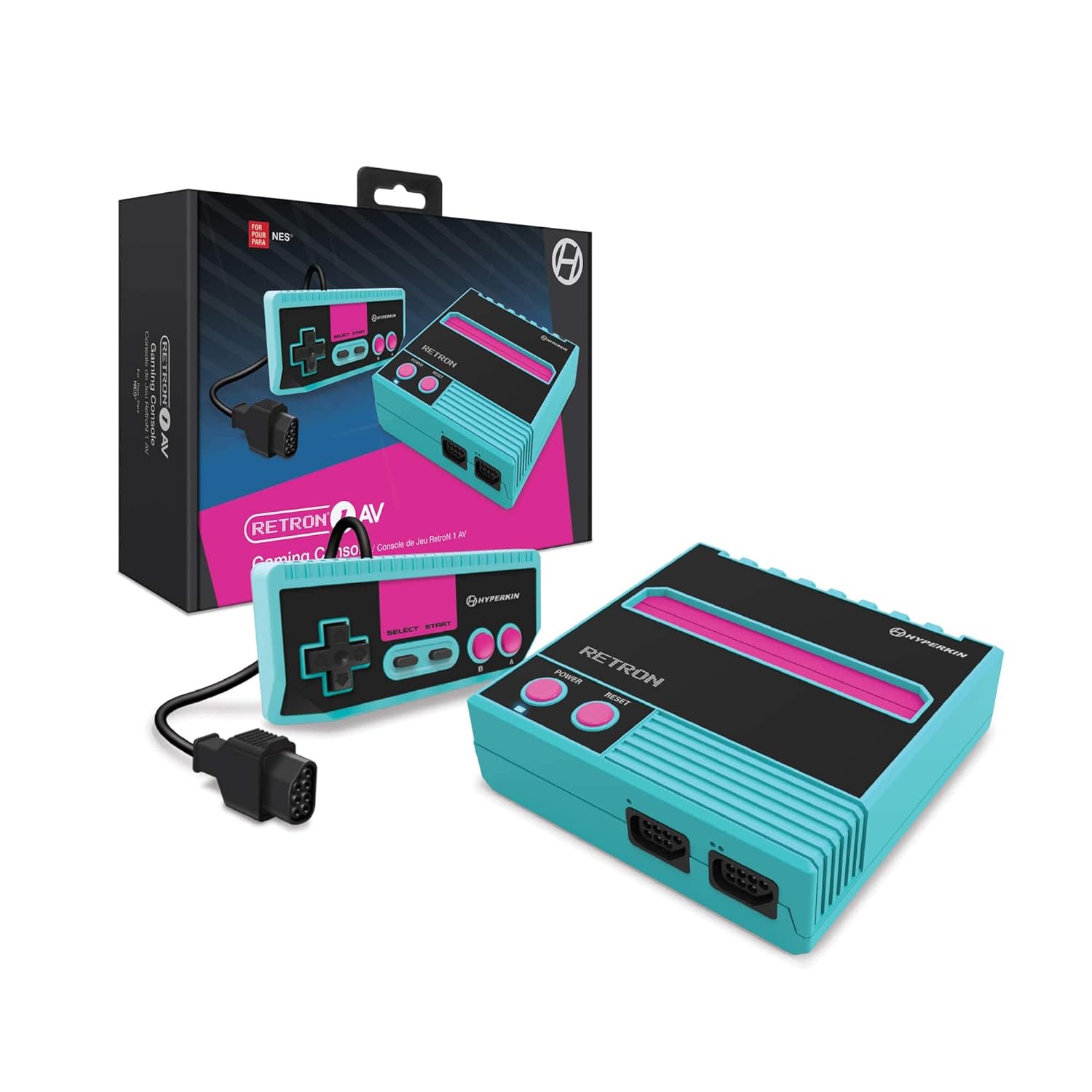Brief history of gaming consoles
Gaming consoles have come a long way since the early days of the Atari gaming console. The first commercially successful video game console, the Atari 2600, was released in 1977 and introduced millions of people to the world of gaming. It featured iconic games like Pac-Man and Space Invaders, revolutionizing the gaming industry. Over the years, gaming consoles have evolved with advancements in technology. From the introduction of 8-bit graphics to the rise of 3D gaming, consoles like the Nintendo Entertainment System, PlayStation, and Xbox have pushed the boundaries of what gaming can be. Today, we have powerful consoles like the PlayStation 5 and Xbox Series X that offer stunning visuals and immersive gameplay experiences. The history of gaming consoles is a testament to the constant innovation and evolution of the gaming industry.
Importance of gaming consoles in the gaming industry
Gaming consoles have played a crucial role in shaping the gaming industry. They have provided a dedicated platform for developers to create and showcase their games, allowing for more immersive and interactive experiences. Consoles have brought gaming into the mainstream, making it accessible to a wider audience and creating a multi-billion dollar industry. The introduction of online gaming capabilities has connected players from around the world, fostering a sense of community and competition. Gaming consoles have also driven technological advancements, pushing the boundaries of graphics, processing power, and storage capacity. They have become entertainment hubs, offering not just gaming, but also streaming services, social media integration, and multimedia capabilities. The importance of gaming consoles cannot be overstated, as they continue to shape the future of gaming and entertainment.
The Early Era of Atari Gaming Consoles

Atari and the birth of home gaming
The Atari gaming console holds a special place in the history of gaming consoles as it marked the birth of home gaming. Released in the 1970s, the Atari 2600 introduced gaming to a whole new audience and revolutionized the industry. With its iconic woodgrain design and joystick controller, the Atari 2600 brought arcade-style games into the living room.
The Atari gaming console offered a variety of games, ranging from classics like Pong and Space Invaders to adventure games like Pitfall! and Adventure. It paved the way for future consoles by popularizing the concept of interchangeable game cartridges, allowing players to expand their gaming library.
While the graphics and sound capabilities of the Atari gaming console may seem primitive by today’s standards, it laid the foundation for the gaming industry as we know it. The success of the Atari 2600 opened up a whole new world of possibilities for gaming at home, setting the stage for future advancements in technology and gameplay.
Nintendo Entertainment System (NES) and its impact on the market
The Nintendo Entertainment System, commonly known as the NES, had a significant impact on the gaming market when it was released in the mid-1980s. It revitalized the industry after the video game market crash of 1983 and introduced many beloved franchises that are still popular today.
The NES brought gaming to a wider audience with its accessible and user-friendly design. It featured a distinctive rectangular shape, a front-loading cartridge system, and a gamepad controller that became an industry standard. The NES also introduced the iconic Super Mario Bros., which became a flagship franchise for Nintendo.
One of the key aspects of the NES’s success was its extensive library of games. From classics like The Legend of Zelda and Metroid to popular titles like Duck Hunt and Mega Man, the NES offered a diverse range of genres and experiences. It set the stage for the concept of console exclusives and established Nintendo as a dominant player in the gaming industry.
Overall, the NES’s impact on the market cannot be overstated. It revitalized the gaming industry, introduced iconic franchises, and set the stage for future console generations.
The Rise of Sega and PlayStation
Sega Genesis and its competition with Nintendo
The Sega Genesis, also known as the Mega Drive, was a gaming console released in the late 1980s as a direct competitor to the Nintendo Entertainment System (NES). It offered a more powerful hardware and introduced the concept of “blast processing,” which enhanced the speed and graphics capabilities of certain games. The Genesis quickly gained popularity, thanks in part to its iconic game library that included titles like Sonic the Hedgehog, Streets of Rage, and Mortal Kombat. Sega’s aggressive marketing campaigns, such as the “Genesis does what Nintendon’t” slogan, contributed to the fierce competition between the two companies. While the console had its limitations, it played a pivotal role in shaping the gaming industry and solidifying the console wars of the ’90s.
Introduction of Sony PlayStation and its revolutionary features
The Sony PlayStation, launched in 1994, marked a significant shift in the gaming industry. Unlike its competitors, which focused on cartridge-based systems, the PlayStation introduced the use of CDs as the primary game medium. This allowed for larger storage capacity and more complex games with improved graphics and sound. The console’s 3D capabilities were revolutionary at the time, providing a new level of immersion and realism in gaming experiences. The PlayStation also pioneered the concept of game demos, giving players a taste of upcoming releases. With a strong lineup of games, including iconic titles like Final Fantasy VII and Metal Gear Solid, the PlayStation quickly became a dominant force in the market and laid the foundation for future generations of gaming consoles.
The Transition to 3D Graphics in Atari Gaming Console

Nintendo 64 and its innovative gameplay
The Nintendo 64, released in 1996, revolutionized gaming with its innovative gameplay and graphics. One of its standout features was the introduction of 3D gaming, taking players into a whole new dimension. The console featured a unique controller with a joystick, allowing for more precise movement and control in games. It also popularized multiplayer gaming with its four controller ports, leading to memorable experiences with friends and family. Iconic games like Super Mario 64, The Legend of Zelda: Ocarina of Time, and GoldenEye 007 showcased the console’s capabilities and cemented its place in gaming history. The Nintendo 64’s impact on the industry cannot be overstated, as it set the stage for future consoles and solidified Nintendo as a leader in the gaming market.
Sega Dreamcast and its short-lived success
The Sega Dreamcast, released in 1999, was a console ahead of its time but unfortunately faced a short-lived success. It was the first console to feature online gaming capabilities, allowing players to connect and compete with others around the world. The Dreamcast boasted impressive graphics and introduced innovative features such as the Visual Memory Unit (VMU), a memory card with a built-in LCD screen that could display mini-games and additional content. Despite its technological advancements and a strong lineup of games including Sonic Adventure and Shenmue, the Dreamcast struggled to compete with the PlayStation 2 and faced challenges in marketing and third-party support. Ultimately, Sega discontinued the Dreamcast in 2001, marking the end of an era for the company’s console ventures.
The Era of Xbox and PlayStation Dominance
Introduction of Xbox and its impact on the market
The gaming industry witnessed a significant shift with the introduction of the Xbox gaming console. Developed by Microsoft, the Xbox marked a departure from the traditional gaming consoles like the Atari. Launched in 2001, the Xbox aimed to compete with Sony’s PlayStation and Nintendo’s GameCube. With its cutting-edge technology and innovative features, the Xbox quickly gained popularity among gamers worldwide.
One of the key selling points of the Xbox was its robust online gaming capabilities. The console introduced Xbox Live, an online gaming service that allowed players to compete with others over the internet. This feature revolutionized the gaming experience, paving the way for multiplayer gaming on consoles. Gamers could now connect with friends and strangers alike, enhancing the social aspect of gaming.
The introduction of the Xbox also brought about advancements in graphics and processing power. The console boasted high-definition graphics and a powerful processor, allowing for more immersive and visually stunning gameplay. This shift in technology set a new standard for gaming consoles, pushing the limits of what was possible in terms of visuals and performance.
PlayStation 2 and its record-breaking sales
The PlayStation 2, or PS2, is widely regarded as one of the most successful gaming consoles in history. Released in 2000 by Sony, the PS2 built upon the foundation laid by its predecessor, the original PlayStation. However, it was the PS2’s groundbreaking features and expansive game library that propelled it to unparalleled success.
One of the key factors behind the PS2’s record-breaking sales was its backward compatibility. The console was able to play both PS2 games and its predecessor’s titles, opening up a vast library of games to players. This feature was instrumental in attracting a wide range of gamers, including those who were still invested in the previous generation of gaming consoles.
Another contributing factor to the PS2’s success was its versatility. The console not only offered an exceptional gaming experience but also served as a DVD player. This dual functionality made the PS2 an attractive option for consumers looking to consolidate their entertainment devices.
The PS2’s success can also be attributed to its strong lineup of exclusive games. Games like “Grand Theft Auto: San Andreas,” “Metal Gear Solid 2: Sons of Liberty,” and “Final Fantasy X” became iconic titles that defined the console’s popularity. With its diverse game library, the PS2 catered to a wide range of gaming preferences, further solidifying its position as a market leader.
In conclusion, the Xbox and PlayStation 2 played pivotal roles in shaping the gaming industry. The Xbox’s introduction revolutionized online gaming and pushed the boundaries of technology, while the PlayStation 2’s record-breaking sales and extensive game library solidified its place as one of the most successful consoles of all time. Both consoles, in their own ways, left a lasting impact on the gaming landscape, paving the way for future innovations in the industry.
The Current Generation of Gaming Consoles: Exploring the Evolution and Impact of the Atari Gaming Console

Xbox Series X and its powerful hardware
The Xbox Series X, the latest gaming console from Microsoft, has made significant strides in terms of hardware power. With its impressive specifications, it has set a new benchmark for gaming consoles. The console is equipped with a custom-designed AMD Zen 2 processor and RDNA 2 graphics architecture, allowing for breathtaking visuals and seamless gameplay. The inclusion of 16GB of GDDR6 RAM ensures smooth multitasking and faster loading times.
One of the standout features of the Xbox Series X is its backward compatibility, which allows players to enjoy a vast library of games from previous generations. Additionally, the console supports 4K gaming at 120 frames per second, providing an immersive and fluid gaming experience. With the introduction of the Xbox Game Pass, players have access to a wide range of games, including popular titles and exclusive releases.
PlayStation 5 and its groundbreaking features
The PlayStation 5 (PS5) has taken the gaming world by storm with its revolutionary features. Sony has dedicated considerable effort to enhancing the gaming experience with this console. The PS5 boasts a powerful custom-designed AMD Zen 2 processor and RDNA 2 graphics architecture, delivering stunning visuals and realistic gameplay.
One of the most anticipated features of the PS5 is its ultra-high-speed SSD, which significantly reduces loading times and allows for seamless transitions between game scenes. The console also supports 3D audio technology, providing an immersive sound experience that enhances gameplay. The DualSense controller, with its haptic feedback and adaptive triggers, adds a new level of immersion, making players feel more connected to the game.
Furthermore, the PS5 offers backward compatibility, enabling players to enjoy their favorite PlayStation 4 games on the new console. With its exclusive game titles and innovative features, the PlayStation 5 has solidified its position as a leading contender in the gaming console market.



